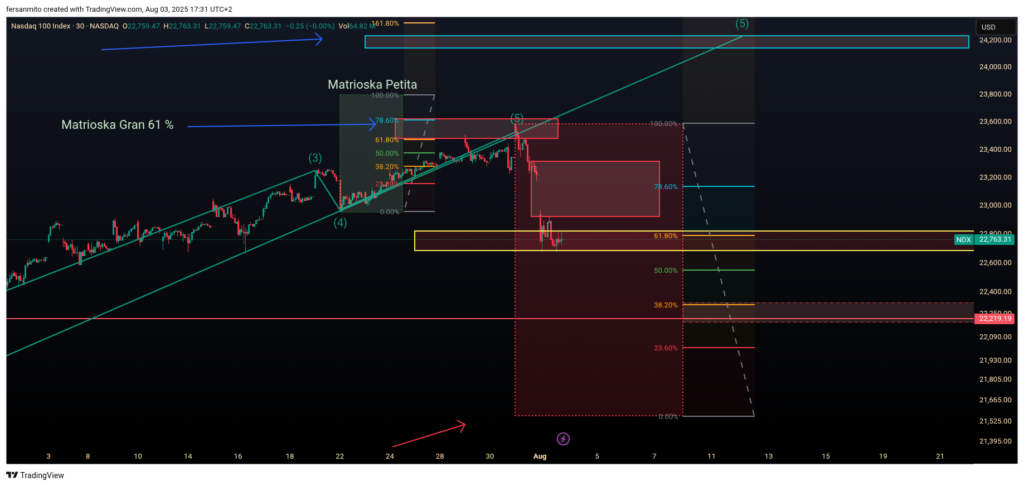Right now, it feels like we’re watching a movie — a well-written script where every actor plays their part. Powell is the “bad cop” refusing to cut interest rates, while Trump presents himself as the one who truly understands what the people need.

The Nasdaq hit historical highs around July 31st or August 1st — close to 23,600. But just after the Fed’s statement, when Powell didn’t confirm any immediate rate cuts, the market started to tumble. In just a couple of days, it dropped to around 22,700 — a fall of nearly 1,000 points — and Trump didn’t hesitate to amplify the move with his narrative.

Trump has made the Fed the enemy. He accused Powell of being out of touch and used the recently revised job data (possibly manipulated or at least inaccurate) to argue that the economy isn’t as strong as Biden’s administration claims.
He’s also hinted that labor data errors and statistical revisions are the result of mismanagement — or worse, a hidden agenda. Elon Musk cutting analysts, revised employment numbers released quietly months later.
And what’s the end goal? To push interest rates down before the election. And if it means triggering a controlled market correction, even better. That way, Trump can say: “I told you so.”
🎯 But here’s what matters most to me as a trader: I stayed out of the market during these days, watching the script unfold without getting emotionally trapped. That decision helped me avoid losses, keep a clear mindset, and stay prepared for the next real opportunity — when probability and context align.
✍️ Personal Reflection
After this drop, I didn’t just avoid losing money — I gained something far more valuable: perspective.
Now I know that before making any decision, I must ask myself:
- What’s the dominant narrative?
- What does the market truly want?
- Who are the players moving the pieces?
Only then, if context and probability align, I trade.
No more impulse. Now, I act with clarity.
And this time, the best trade was no trade at all.